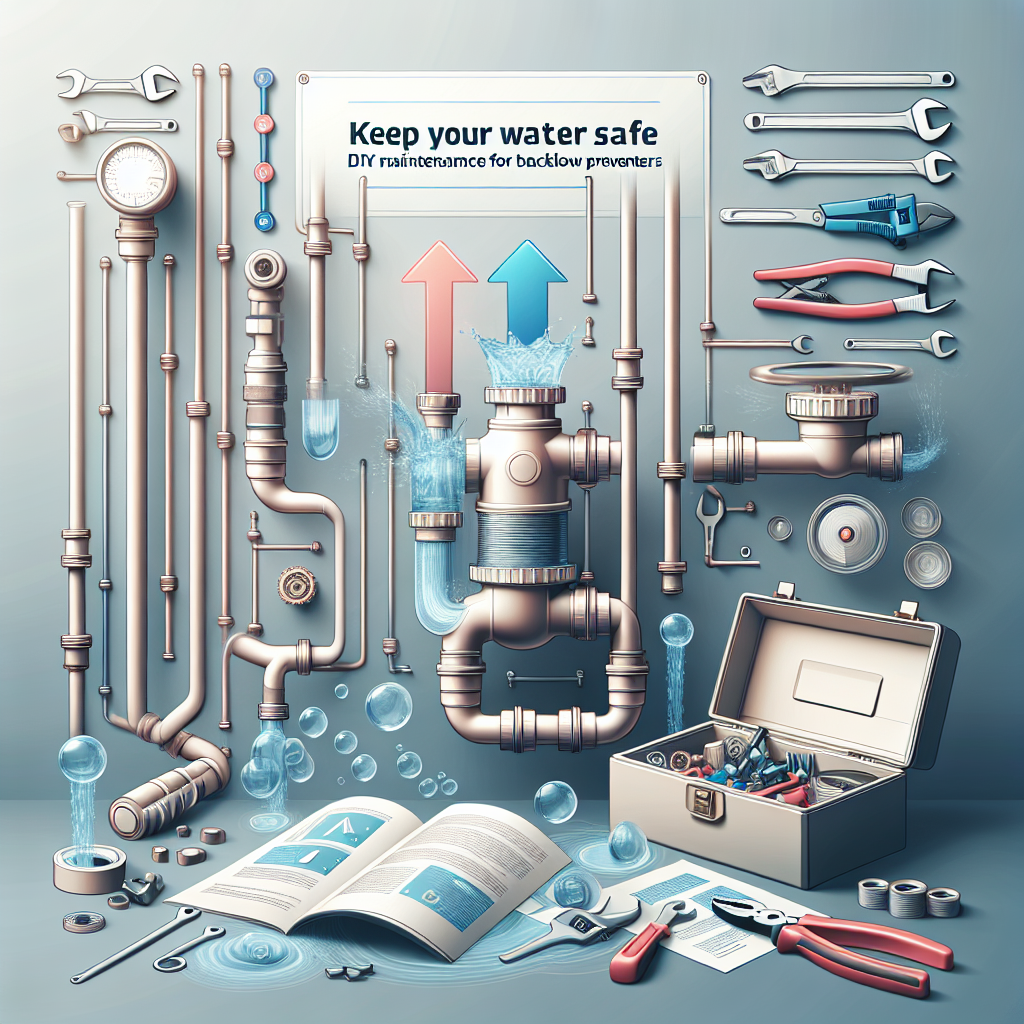When it comes to home plumbing, ensuring your water supply remains uncontaminated is paramount. A functional backflow preventer is one of your best allies in this battle against contamination. Understanding how to maintain these essential devices can save you headaches and health hazards down the line. In this article, we’ll share valuable DIY maintenance tips for your backflow preventers that you can easily implement at home.
What is a Backflow Preventer?
Understanding the Role of a Backflow Preventer
A backflow preventer is a plumbing device designed to keep your water supply free from tampering or contamination. It does this by preventing water from flowing backward into your system, which can happen when there’s a drop in pressure. This can occur due to factors like a water main break or a high demand for water elsewhere in your neighborhood. By maintaining your backflow preventer, you are ensuring that harmful contaminants from garden chemicals, sewage, or other sources don’t pollute your drinking water.
Basic Components of a Backflow Preventer
Key Parts to Inspect Regularly
Before diving into maintenance tips, it’s essential to familiarize yourself with the components of your backflow preventer. Depending on the model, typically, a backflow preventer consists of the following parts:
- Check valves: These prevent the backflow of water.
- Relief valve: This releases excess pressure to prevent backflow.
- Test cocks: These allow you to assess the function of the device.
Regularly inspecting these parts for wear and tear is a good first step toward ensuring long-term functionality.
DIY Maintenance Tips for Your Backflow Preventer
1. Regular Inspections
The best way to keep your backflow preventer in good working order is through regular inspections. Visual checks can help you spot problems like leaks or corrosion before they become more grave issues. Aim to inspect your device at least twice a year, especially before high-demand seasons when your irrigation system is in use.
2. Clean the Check Valves
Over time, debris can accumulate on the check valves, leading to malfunctions. To clean them, turn off your water supply and disassemble the check valve according to the manufacturer’s instructions. Use a non-corrosive cleaner and a soft brush to remove any buildup, then rinse and reassemble the parts securely.
3. Test the Relief Valve
Your backflow preventer is equipped with a relief valve that can sometimes become stuck. To test its functionality, slowly open the valve to relieve pressure. Ensure water flows out smoothly without blockages. If the relief valve fails to open, it may need replacement.
4. Inspect the Test Cocks
The test cocks on your device are critical for testing backflow prevention. Over time, these can become clogged. Use a small brush to clean them, ensuring no other debris enters your system. After cleaning, double-check that they are securely closed after inspection.
5. Schedule Professional Testing
While regular DIY maintenance can significantly prolong the life of your backflow preventer, don’t overlook the importance of professional testing. Many local regulations mandate annual testing by a certified plumber, and for good reason—these experts have the tools and experience to ensure your device is functioning correctly.
When to Replace Your Backflow Preventer
Signs of Wear and Tear
Despite diligent maintenance, backflow preventers have a limited lifespan. If you notice persistent leaks, rust, bulges, or any sign of physical damage, it’s time to consider replacement. Also, if your local codes require it or if your device fails repeated tests, upgrading to a new backflow preventer may be your safest option.
The Importance of Compliance
Understanding Local Regulations
In many areas, maintaining a backflow preventer isn’t just good practice; it’s a legal requirement. Familiarize yourself with local laws and guidelines regarding backflow prevention and testing. A certified plumber can help you navigate these requirements, ensuring that your home remains compliant and, most importantly, your water stays safe.
Conclusion: Keep Your Water Supply Protected
Maintaining your backflow preventer may seem daunting, but these DIY tips can empower you to safeguard your water supply effectively. Regular inspections, cleaning, and professional testing will help ensure that your backflow device does its job well. Remember that your family’s health and safety depend on the quality of your water supply—invest time in your plumbing, and you’ll reap the benefits of clean, safe water.
By taking a proactive approach to your backflow prevention maintenance, you’re not only protecting your loved ones but also contributing to the overall safety and health of your community’s water system. Keep your water safe; the peace of mind is worth the effort!


